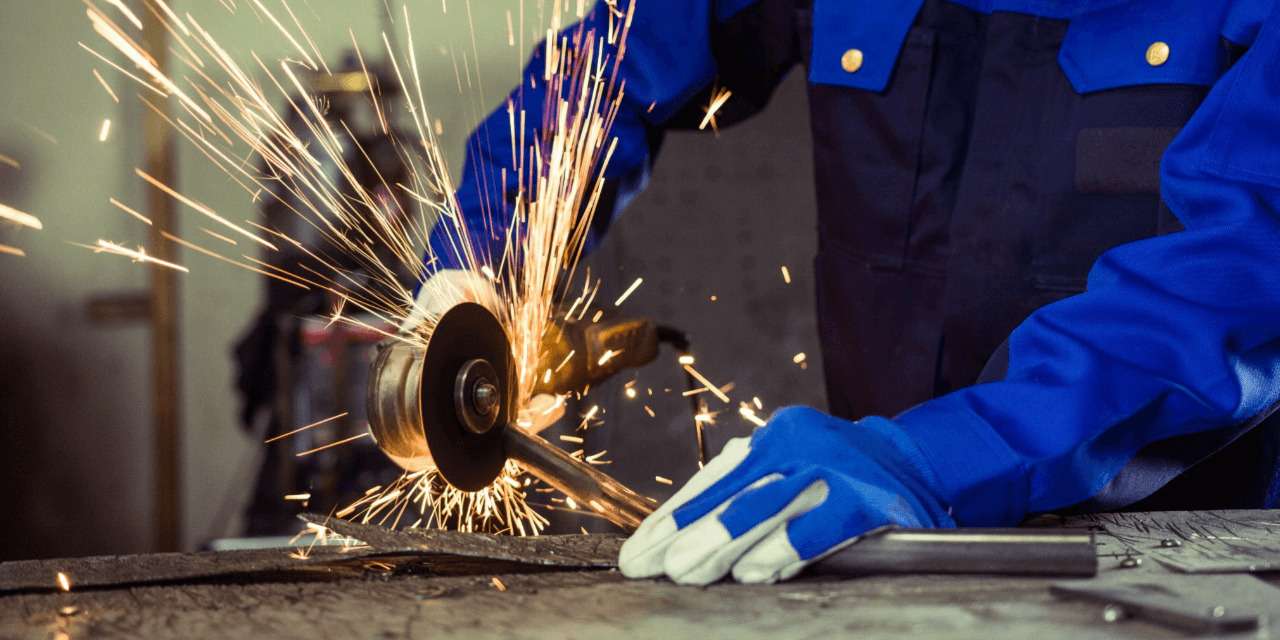In the warehouse, the hands are the most exposed parts of the workers’ bodies. For this reason, it is not only common sense, but also an obligation to equip your workers with the right gloves. How to choose the right gloves according to the standards, the products handled?Discover a simple and clear RAJA guide for your next purchases.

The different risks to which your employees are exposed
Working in a warehouse is, in essence, manual work. The hands of your employees are therefore particularly exposed to a variety of hazards.Depending on the sector of activity you are involved in, these risks may be more or less extreme
- Mechanical risks: the most common, but also the most disabling, are the risks of crushing, cutting or puncturing when carrying or moving an object, for example.
- Thermal risks: hands are extremely sensitive to temperature, so if you work in particularly hot or cold environments, you need to choose the right protective equipment.
- Chemical risks: some operators have to handle chemicals that are particularly harmful to the skin.
- Electrical risks: warehouses that store electrical and electronic products run the risk of electrocution to their handlers (discharges, conductivity, etc.).


How to combat the cold in the warehouse?
Whether you work in a warehouse to handle fresh produce, or whether it is simply a harsh winter, it is important to protect your employees against the risks associated with the cold. Equipping your employees with protective clothing and gloves against the cold becomes essential when the thermometer falls below 5°C. Providing a heated room for breaks is also a good idea, which can be enhanced with the provision of hot drinks.All our advice on how to combat the cold in the warehouse.
How to choose protective gloves and work gloves?
If the risks incurred by handlers are diverse, so too are the range of safety gloves available. It is always good news to be able to have a wide range of choices. However, there are certain details that need to be paid attention to to in order to be certain that you are choosing the best personal protective equipment.
Size
your employees’ health at riskto protect workers from accidents, protective equipment meets a number of standards, which we will detail below. cta id=’9e55c563-c88a-4c8b-8ceb-851ad1cdc27c’]
CE certification
This symbol, which is not only found on personal protective equipment, indicates that the product complies with European regulations. It is an essential prerequisite for ensuring that a product meets basic safety standards.
European standard for protective gloves: EN 420
This European standard relates directly to protective gloves. To comply with this standard, safety gloves must meet a number of rules
- Respect for safety: the gloves must not contain any allergenic substances and must be pH neutral;
- Compliance with the European size chart;
- Compliance with the dexterity test;
- Compliance with the marking instructions.
mechanical risks: EN 388
As mechanical risks are the most frequent in handling, it is essential to choose cut-resistant protective gloves that comply with the EN 388 standard, which guarantees that gloves bearing the mark offer protection against
- Cuts ;
- Tears;
- Abrasions;
- Punctures.
this standard is accompanied by a scale for judging the performance of the protection offered.This scale ranges from 0 (low protection) to 4 or even 5 (high protection).
Chemical and microbiological risks: EN 374
Gloves meeting the EN 374 standard guarantee protection against chemical and abrasive products.However, a glove certified to EN 374 is not necessarily suitable for all types of use. Here again, a scale has been drawn up to inform us of the type of chemical product against which the glove offers optimum protection.This takes the form of a letter, together with the words “specific chemical protection”
- A : certified resistance against methanol ;
- J : certified resistance against n-Heptane;
- K : certified resistance to caustic soda 40%;
- L: certified resistance to sulphuric acid.
in addition to their resistance, these chemical protection gloves are long-lasting and are lined with textile to provide your employees with greater comfort.
Cold risks: EN 511
The cold is particularly disabling in the warehouse. In addition to seizing up movements, it encourages accidents. Safety gloves meeting the EN 511 standard can protect against the effects of the cold down to -50°C.It is accepted thata cold protection glove must meet three requirements
- Waterproofing ;
- Resistance to contact cold;
- Resistance to convective cold.
as with other types of protective gloves, the performance of each criterion is rated on a scale of 0 to 4 for cold resistance, and 0 to 1 for permeability.
Heat hazards: EN 407
Skin is extremely sensitive to heat, and as hands are often the first point of contact with a hot element, the adoption of heat protective gloves is vital to protect your handlers.To meet EN 407, a glove must validate the following requirements
- Fire resistance ;
- Resistance to contact heat;
- Resistance to convective heat ;
- Resistance to radiant heat;
- Resistance to small splashes of moltenmetal;
- Resistance to large splashes of molten metal.
the performance index for each of these criteria is rated from 0 to 4. Each handling job has its own protective glove. Although there is a wide range of gloves on offer, the European regulations make it easy to find your way around, thanks to symbols indicating the performance of the protective clothing. Whatever the protection issue you are facing, this is an element that should not be overlooked for the safety of your employees.Points to remember
- Handlers’ hands are particularly exposed to hazards in the warehouse,
- Handling work gloves must carry the CE symbol, signifying their compliance with European regulations,
- European standards exist, making it easy to identify what type of protection a safety glove offers.















